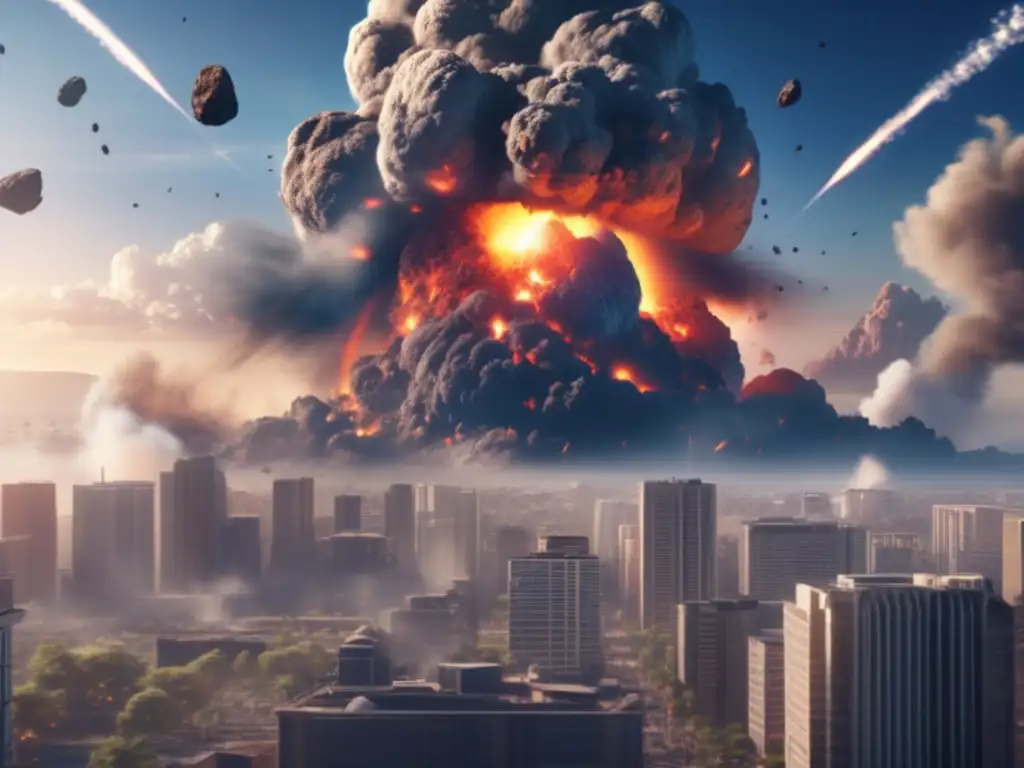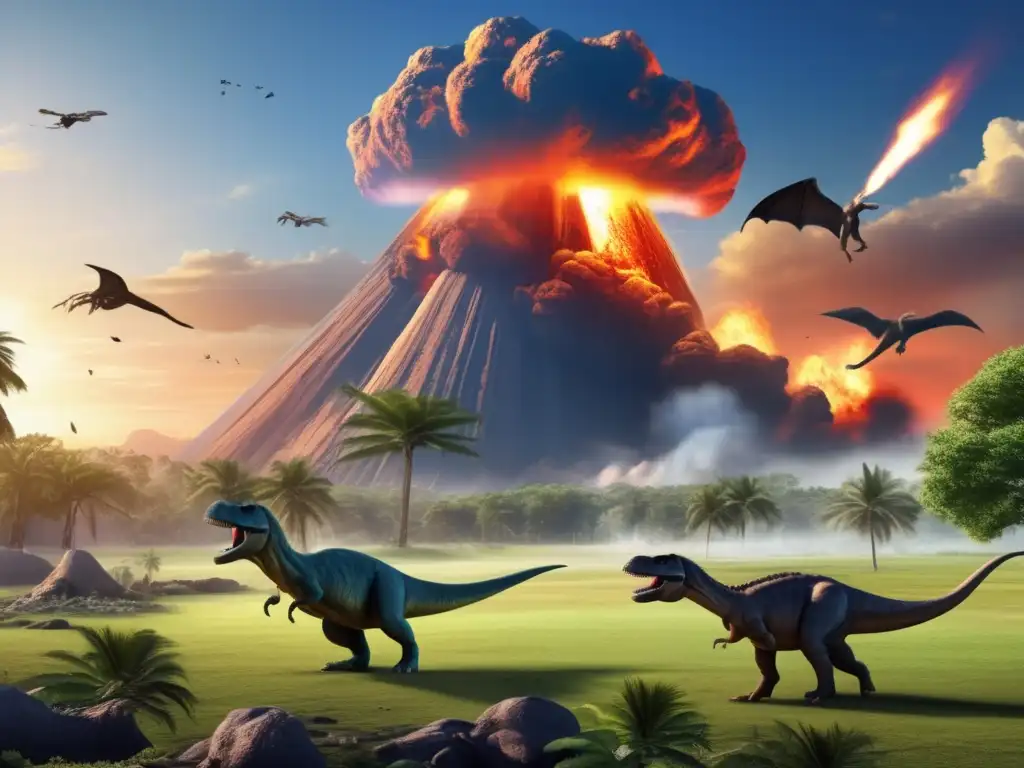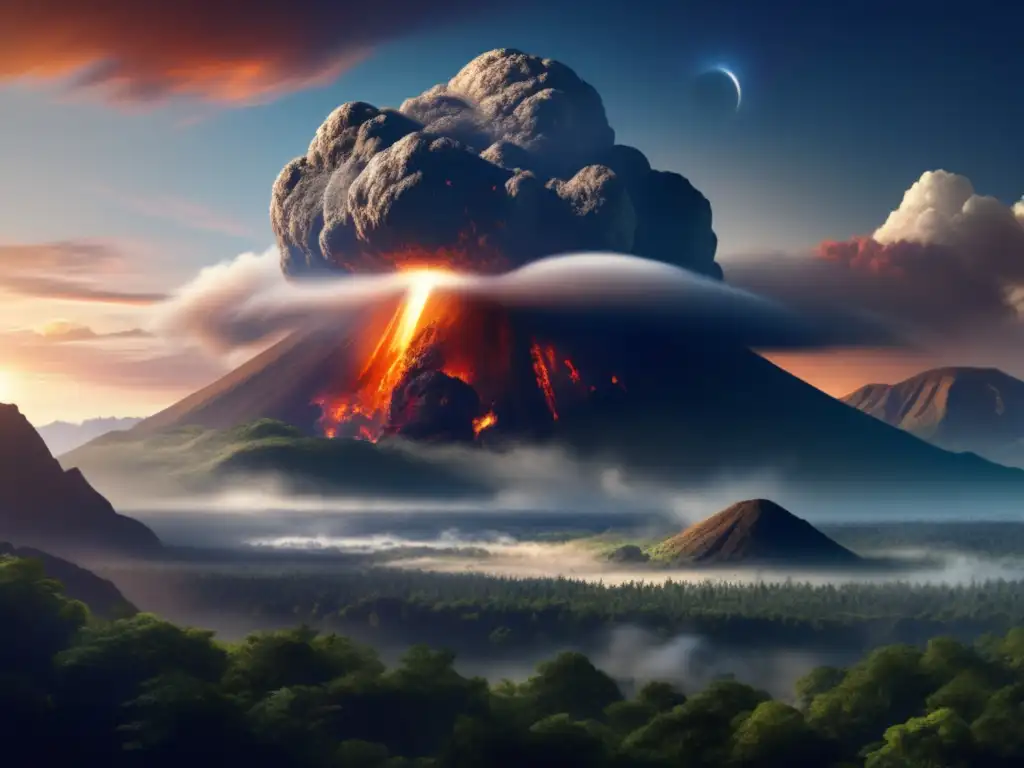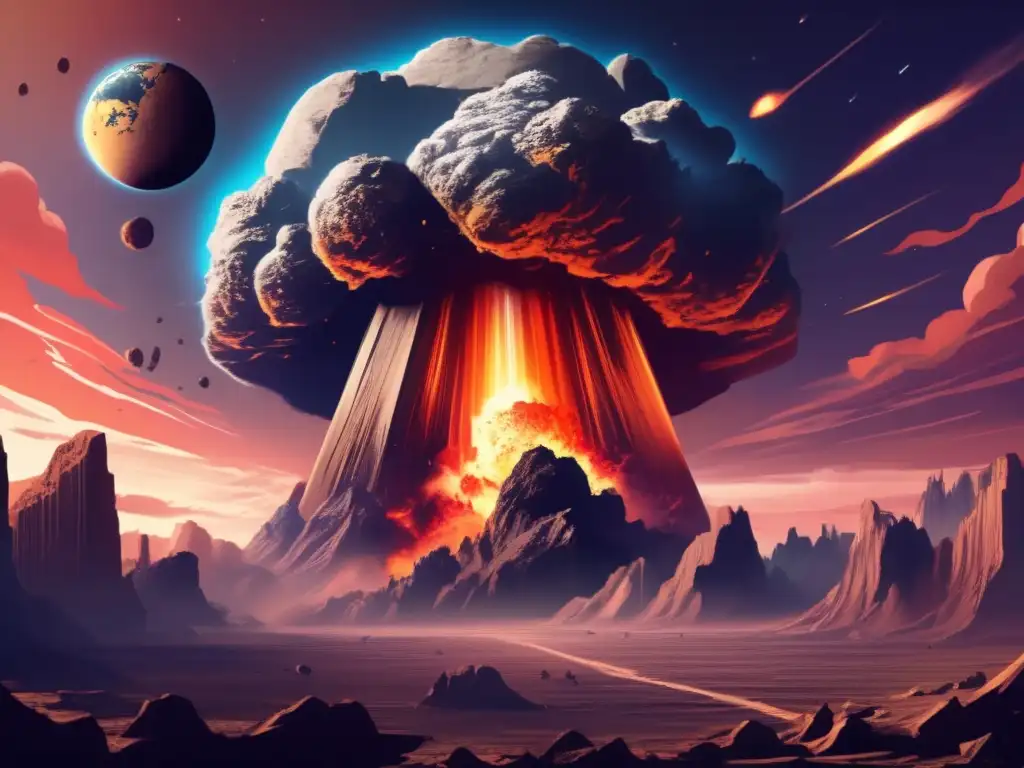The Day The Earth Shook: Asteroids And Dinosaur Extinction

Introduction
Asteroids are fascinating celestial objects that have captured our imagination for hundreds of years. From ancient beliefs to modern discoveries, asteroids have always intrigued us. However, these space rocks are not just interesting for their appearance or location; they can also have a profound impact on Earth.
Asteroid Impacts

What is an asteroid impact?
An asteroid impact occurs when an asteroid collides with the surface of a planet or moon. This can cause catastrophic damage, including craters, earthquakes, wildfires, tsunamis, and even mass extinctions.
What happened to the dinosaurs?
The extinction of dinosaurs is one of the most well-known examples of an asteroid impact. Approximately 66 million years ago, an asteroid roughly 10 km in diameter hit the Earth, causing widespread devastation and the extinction of non-avian dinosaurs. This event is known as the Cretaceous-Paleogene (K-Pg) extinction event.
How did the asteroid cause the extinction?
The asteroid impact caused a massive explosion, which sent debris and ash into the atmosphere, blocking out the sun and causing global cooling. This in turn led to a chain reaction of events, including plant die-offs, food chain disruption, and ultimately the extinction of non-avian dinosaurs.
Impact Craters

What is an impact crater?
When an asteroid hits the Earth, it creates a circular depression in the ground called an impact crater. These craters can range from a few meters to hundreds of kilometers in diameter, depending on the size of the asteroid and the angle of impact.
Where are impact craters located?
There are impact craters all over the world, but they are particularly well-preserved in some regions. For example, the Chicxulub crater, which is associated with the extinction of non-avian dinosaurs, is located on the Yucatan Peninsula in Mexico.
What can impact craters tell us?
Impact craters can provide valuable information about the history of Earth and the solar system. For example, studying impact craters can help us understand the frequency of asteroid impacts and their effects on our planet. They can also provide clues about the composition and origin of asteroids.
Asteroid Detection

How do we detect asteroids?
There are several methods for detecting asteroids, including ground-based telescopes, space-based telescopes, and radar imaging. Scientists use these techniques to track the movement of asteroids and determine their size, shape, and trajectory.
Why is asteroid detection important?
Asteroid detection is important because it helps us identify potentially hazardous asteroids that could collide with Earth. By tracking their movement, we can predict future impacts and take measures to deflect or destroy them before they reach our planet.
What are some examples of asteroid detection efforts?
One example of an asteroid detection effort is NASA's Near-Earth Object (NEO) program, which aims to identify and track potentially hazardous asteroids that could impact Earth. Another example is the B612 Foundation, which is dedicated to protecting the Earth from asteroid impacts by developing asteroid detection and deflection technologies.
Frequently Asked Questions

-
Can an asteroid impact happen again?
Yes, asteroid impacts can and do happen. However, the odds of a catastrophic impact are relatively low. Scientists estimate that an asteroid big enough to cause a global catastrophe hits the Earth once every few million years.
-
How do we know that the asteroid caused the dinosaur extinction?
Scientists have found evidence in the rock layers that suggest that the asteroid impact was responsible for the mass extinction. For example, they have found a layer of sediment containing high levels of iridium, a rare element that is abundant in asteroids but rare on Earth.
-
Can we prevent an asteroid impact?
Yes, it is possible to prevent an asteroid impact. NASA and other organizations are developing technologies to deflect or destroy asteroids before they reach Earth.
-
Are there any other examples of asteroid impacts?
Yes, there are many examples of asteroid impacts throughout Earth's history. Some notable examples include the Barringer Crater in Arizona and the Tunguska event in Russia.
-
What should I do if an asteroid is headed towards Earth?
If an asteroid is headed towards Earth, follow the instructions of your local authorities. In general, you should seek shelter in a sturdy building or underground bunker.
Conclusion
Asteroid impacts are a fascinating and important topic that is relevant to our understanding of Earth and the solar system. By studying impact craters, tracking asteroids, and developing detection and deflection technologies, we can better prepare for future impacts and protect ourselves from the potential consequences.
We encourage you to share your thoughts and questions in the comments section below, and to explore additional resources on www.asteroidrealm.com.
Additional Resources

 Asteroids: The Silent Killers Of The Dinosaur Era
Asteroids: The Silent Killers Of The Dinosaur Era The Dinosaur Extinction Puzzle: Asteroids As The Missing Piece
The Dinosaur Extinction Puzzle: Asteroids As The Missing Piece Asteroids And The Dinosaur Doomsday Clock
Asteroids And The Dinosaur Doomsday ClockIf you want to discover more articles similar to The Day The Earth Shook: Asteroids And Dinosaur Extinction, you can visit the Asteroids and Dinosaurs category.
Leave a Reply

Articulos relacionados: